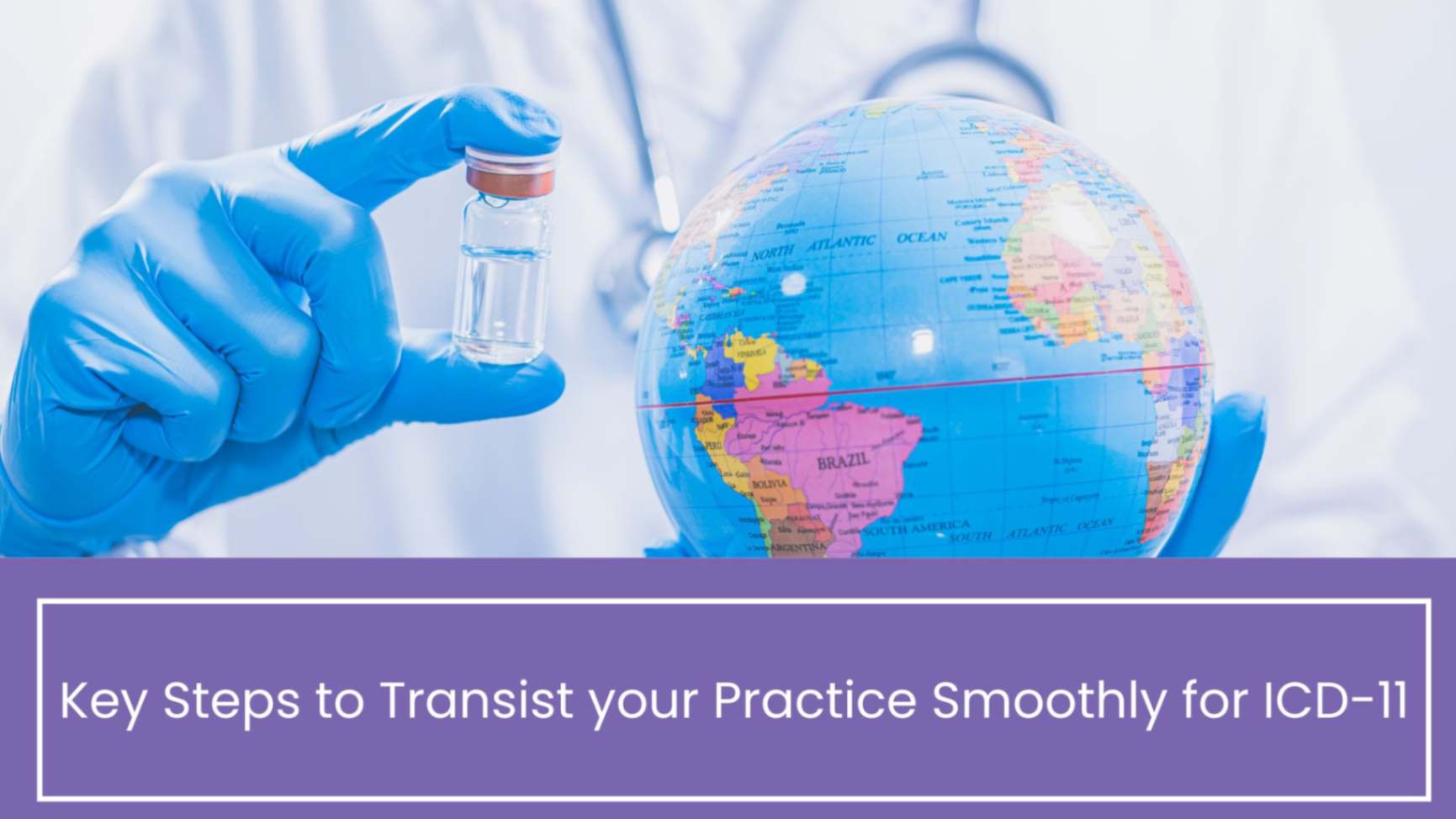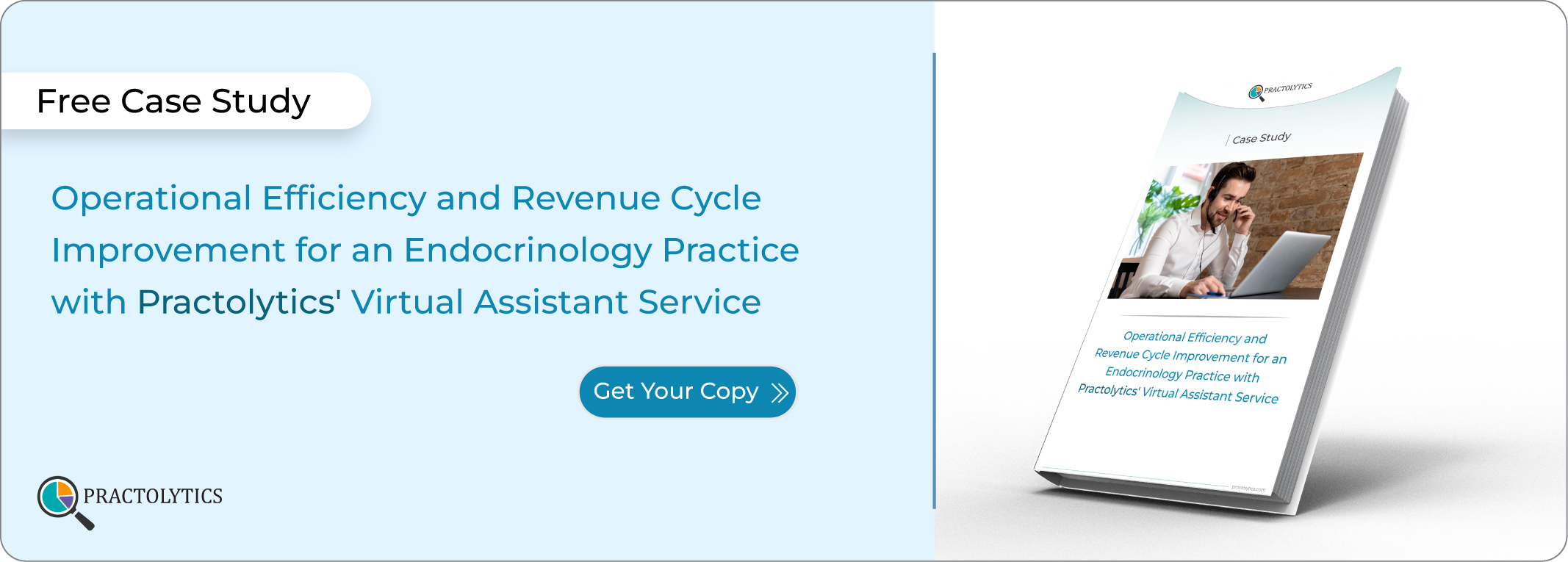Key Steps to Transist your Practice Smoothly for ICD-11
An ever-changing ecology is the healthcare industry. It is always being updated with new laws, technology, and coding methods. With the complete implementation and optimization for key steps to transit your practice smoothly for ICD-11 in 2025, a major change will take place. It is necessary to prepare practices for this shift. ICD-11 offers substantial increases in scope, accuracy, and detail compared to ICDNUMICD-10 is the recognized code for diagnosing diseases. The time is crucial. Practices that haven’t fully embraced the subtleties or are still negotiating the complexity need a seamless and effective shift. Not doing so may result in claim denials. It may also lead to interruptions in the revenue cycle and affect patient care.
ICD-11 offers certain advantages over its predecessor. Better representation of current medical knowledge, more adherence to international standards, higher-quality data for research and public health, and more thorough coding are some of these advantages. These advantages exist but require careful planning and a calculated execution strategy.
To help guarantee a seamless transition to ICD-11 in 2025, your practice should take these crucial actions. These steps will ensure a successful transition:
- Comprehensive Assessment of Current Readiness:
Assessing the present level of preparedness in your practice is the first step. This entails evaluating your current coding routines, personnel expertise, medical billing software, and EHR systems. Ask crucial questions like:
- Are all of our current systems ICD-11 compatible?
- Has the new coding system been sufficiently explained to our healthcare staff and coders?
- Are our documentation processes detailed enough to support the increased specificity of ICD-11?
- Do we have resources set up specifically for the transition and a clear timeline?
- What barriers or snags are we anticipating?
- Making a targeted and effective transition plan requires early identification of these shortcomings.
- Invest in Robust Training and Education:
The ICD-11 coding scheme is being revised. Its laws have changed. Its structure and vocabulary have also changed. It is essential that employees undergo thorough training. It is crucial for everyone. These employees work in healthcare. Medical assistants, physicians, nurses, and billing personnel are among them. This training should cover:
- The fundamental structure and principles of ICD-11.
- New codes, coding conventions, and guidelines specific to your practice’s specialties.
- Documentation requirements to support accurate ICD-11 coding.
- Practical application through case studies and real-world scenarios.
- Any new information regarding official rules or interpretations.
- It’s important to offer materials and ongoing training to staff members. This ensures they are aware of any updates or clarifications.
- Upgrade and Optimize Your Technology Infrastructure:
The foundation of your coding and reimbursement procedures is your EHR and billing systems. Make that your current software can handle the new coding system’s increased complexity and is completely compliant with ICD-11. This may involve:
- Upgrading existing software to the latest versions.
- Implementing new software solutions if your current systems are not compatible.
- Testing the integrated systems thoroughly to identify and resolve any potential issues.
- Streamlining EHR processes to enable precise and effective ICD-11 coding.
- Not updating or optimizing your technology might result in serious mistakes, hold up the processing of claims, and cost you money.
- Revamp Documentation Processes:
ICD-11’s higher specificity necessitates more thorough and precise clinical documentation. This higher specificity calls for more thorough and precise clinical documentation. Physicians need to be careful when recording patient diagnoses. They also need to be careful when recording patient symptoms and procedures. This includes:
- Putting into practice ICD-11-compliant documentation templates that are clear and simple.
- supplying doctors with the required instruments and resources and teaching them the value of thorough documentation.
- Putting in place internal audits and feedback systems to guarantee the correctness of documents.
- Making documentation requirements a smooth part of the patient experience by integrating them into the EHR workflow.
- Successful reimbursement and correct ICD-11 coding are predicated on high-quality documentation.
- Implement a Phased Transition and Thorough Testing:
A sudden switch to ICD-11 can be disruptive and increase the risk of errors. A phased approach is recommended, which may involve:
- Starting with dual coding (using both ICD-10 and ICD-11) for a period to identify potential issues and familiarize staff.
- Gradually increasing the volume of ICD-11 coding as staff proficiency grows.
- Before the complete changeover, make sure your workflows and systems are thoroughly tested using ICD-11 codes.
- Put emergency plans in place. To handle unforeseen issues during the transition.
- A gradual rollout and extensive testing reduces disturbance and guarantee a more seamless changeover overall.
Why Companies Need Someone Like Practolytics for an ICD-11 Transition?
For busy healthcare clinics with little funding and knowledge of coding and regulatory changes, navigating the complexity of an ICD-11 shift can be extremely difficult. Here, a qualified partner such as Practolytics can guarantee a smooth and effective transfer and offer priceless help. Here’s why companies rely on Practolytics for such a critical undertaking:
- Deep Knowledge of Coding and Compliance: Practolytics has a group of qualified and seasoned coding experts who are knowledgeable with ICD-11 best practices, changes, and recommendations. They can guarantee that your practice complies with all legal standards and offer knowledgeable advice.
- All-inclusive Training Solutions: Practolytics offers training courses that are tailored to your staff’s and your practice’s needs. To ensure team knowledge and comfort with ICD-11, training goes beyond fundamental coding concepts. It focuses on real-world scenarios and practical application.
- Practolytics assesses your current technical infrastructure. It then makes recommendations for improvements or new solutions to ensure ICD-11 compatibility and optimal performance.
- Strategies for Documentation Improvement: Practolytics can assist your practice in updating its documentation procedures to satisfy the strict ICD-11 regulations. To guarantee accuracy and completeness, they might offer templates, train medical professionals, and put auditing procedures in place.
- Risk Mitigation and Error Reduction: You may greatly lower the risk of coding errors, claim denials, and revenue cycle delays related to the ICD-11 shift by working with Practolytics. Their knowledge guarantees correct coding and compliance right away.
- Practolytics’ ICD-11 changeover experience provides a smooth transition. This minimizes disruptions to patient care. It frees up your internal team to concentrate on their primary duties.
- An ICD-11 modification’s cost-effectiveness is a crucial consideration. Working with a professional partner like Practolytics can save money. This is because it can help prevent mistakes, denied claims, and lost revenue.
- Practolytics offers continuous assistance to guarantee long-term compliance and effectiveness. They notify your practice of any changes or additions to ICD-11 protocols. They also notify you of these changes.
Conclusion:
In 2025, the system is going to switch to ICD-11. This requires careful preparation. Thorough instruction and calculated execution are also necessary. Practices will benefit from proactive planning and resource investment. Better patient care, more precise compensation, and higher-quality data will result from this. By collaborating with a specialist like Practolytics, healthcare institutions may get the information, tools, and support they require to handle the changeover. The practice’s operational effectiveness and long-term financial stability are guaranteed by this cooperation. Assess your level of readiness for medical coding in the future right now. Take the required actions to confidently embrace it.
Medical practices need to take action now to guarantee a seamless transition from ICD-10, as ICD-11 is scheduled to go into full effect in 2025. The crucial steps for getting your healthcare practice ready are described in this article, including assessing current preparedness, updating technology, updating paperwork, investing in staff training, and putting in place a phased strategy to minimize interruption. Better specificity, higher-quality data, and greater conformity to international standards are all benefits of ICD-11; but, without adequate planning, procedures run the danger of claim denials and workflow interruptions. The blog also discusses how professional advice, training, and compliance support from a reliable partner like Practolytics can streamline the move. By taking wise, calculated actions now, you can learn how to future-proof your business, steer clear of expensive mistakes, and confidently adopt the new coding standard.
Read More – Why Doctors in Atlanta are Turning to Virtual Medical Assistants
Talk to Medical Billing Expert Today — Get a Free Demo Now!






